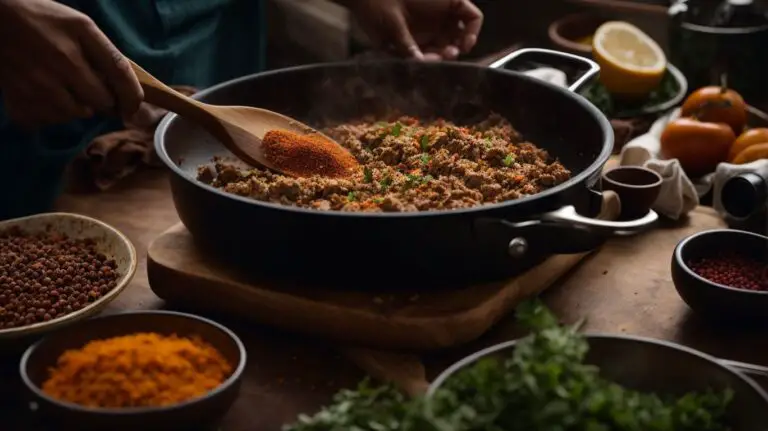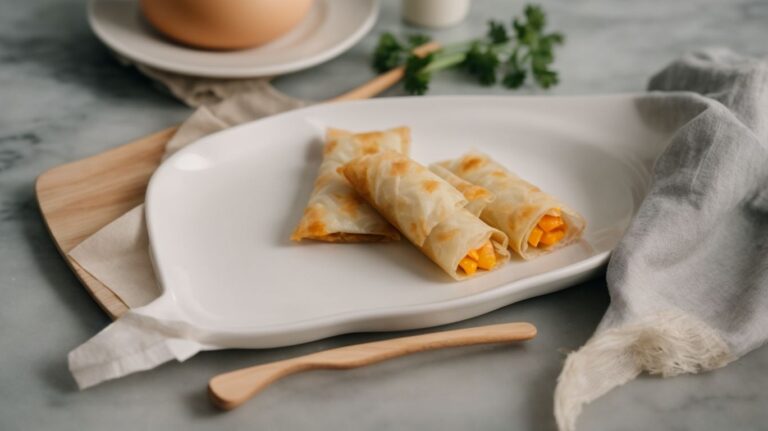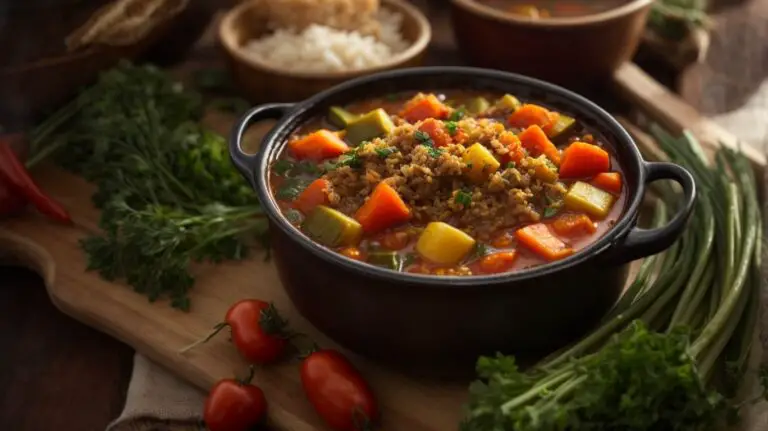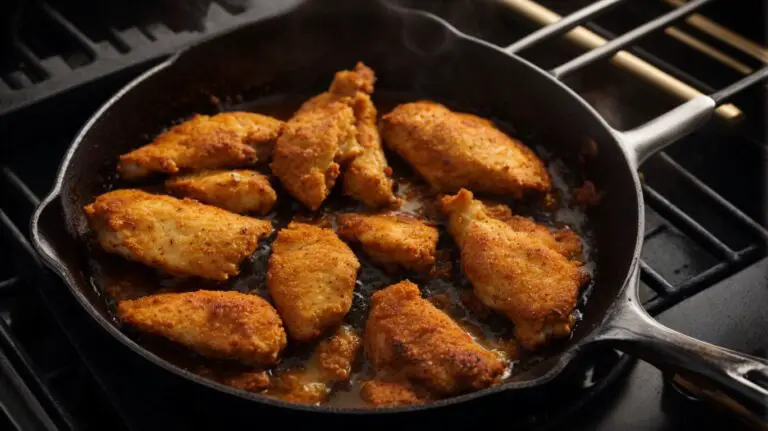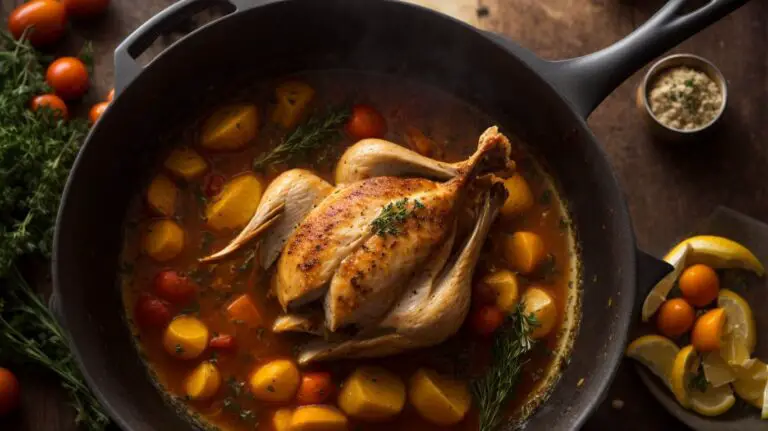How to Cook a Pig Underground?
Have you ever wondered about the origins of cooking a pig underground?
Explore the different methods of this unique cooking technique, from the traditional Hawaiian Luau to Southern Style Pit Barbeque and Mexican Cochinita Pibil.
Discuss the tools and equipment needed, how to prepare and season the pig, the step-by-step cooking process, and tips for serving and enjoying the delicious results.
Get ready to tantalize your taste buds with this mouth-watering culinary adventure!
Key Takeaways:
What is the Origin of Cooking a Pig Underground?
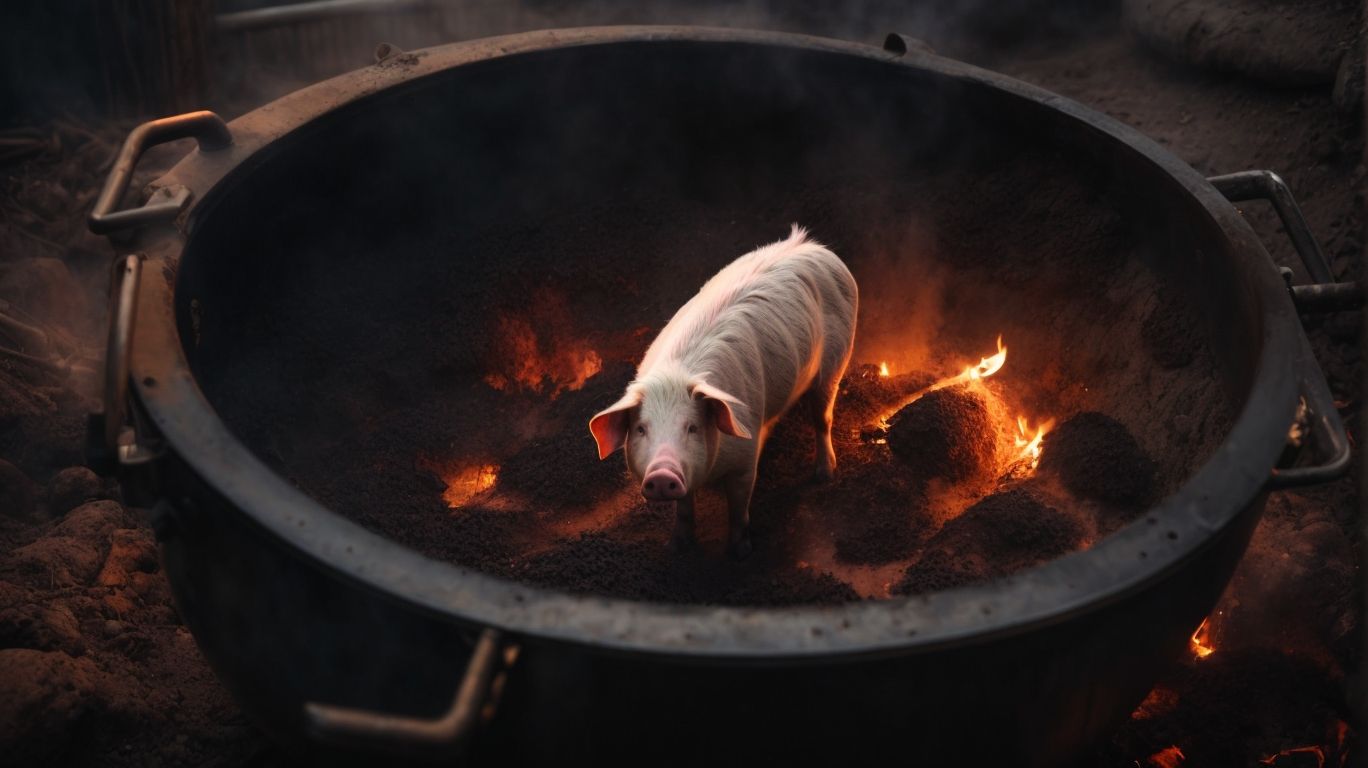
Credits: Poormet.Com – Joe Rodriguez
The origin of cooking a pig underground dates back to ancient culinary traditions where communities gathered to celebrate and feast on a whole pig cooked beneath the earth’s surface.
This cooking method’s roots can be traced to cultures across the globe, from Hawaiian luaus to traditional Maori hangi feasts. The pit used for underground pig roasting is often carefully dug to just the right size to accommodate the pig fully. This ancient practice not only served as a way to cook large quantities of meat but also held deep cultural significance, symbolizing unity and abundance within the community.
What Are the Different Methods of Cooking a Pig Underground?
Various methods are employed worldwide for cooking a pig underground, including traditional Hawaiian luaus, Southern-style pit barbecues, and Mexican Cochinita Pibil.
Among these methods, traditional Hawaiian luaus hold a special cultural significance, often representing a festive celebration and community gathering. In a Hawaiian luau, the pig, also known as ‘kalua pig,’ is typically seasoned with sea salt, wrapped in ti leaves, and cooked in an earth oven called an ‘imu.’ The pig is slow-cooked for hours, resulting in tender, flavorful meat with a distinct smoky aroma.
Traditional Hawaiian Luau
The Traditional Hawaiian Luau is a festive gathering that revolves around the meticulous preparation and roasting of a whole pig in an underground oven known as an ‘imu’, creating a culinary centerpiece for celebrations like Hokulea voyages and cultural luaus.
Rooted in the rich cultural traditions of Hawaii, the luau holds a profound significance as a communal feast that brings people together. The act of pig roasting symbolizes the spirit of unity and sharing within the community, with the aroma of the succulent meat permeating the air and igniting a sense of togetherness.
During imu cooking, the pig is wrapped in banana leaves and placed on hot stones inside the underground pit, allowing it to slow-cook to perfection. The banana tree leaves not only impart a distinct flavor but also help in retaining moisture, resulting in tender, flavorful meat that embodies the essence of Hawaiian cuisine.
Southern Style Pit Barbeque
The Southern Style Pit Barbeque is a time-honored tradition where a pitmaster expertly slow-cooks a whole pig over hot coals, infusing it with rich flavors and tenderness, making backyard gatherings and community events truly memorable.
Using a combination of fire, rocks, and time-honored techniques, the pitmaster carefully tends to the fire, ensuring a consistent and controlled cooking environment. The use of rocks helps to retain and distribute heat evenly, creating the perfect cooking surface. As the pig slowly cooks, the flavors intensify, creating a gourmet experience that is deeply rooted in Southern culinary heritage.
Mexican Cochinita Pibil
Mexican Cochinita Pibil showcases a unique blend of flavors as a whole pig is marinated in achiote paste, wrapped in banana leaves, and slow-cooked in an underground pit, resulting in a tender and aromatic dish crafted by skilled butchers and chefs.
This dish holds a special place in Mexican culinary traditions, with its roots tracing back to the ancient Mayan cooking techniques. The achiote paste used in the marinade not only imparts a vibrant red color but also infuses the meat with a delicious earthy and slightly peppery flavor. Pit-cooking, known locally as ‘pib,’ brings a unique method where the meat is enveloped in banana leaves, allowing it to cook slowly in its own juices, creating an unforgettable tenderness.
What Are the Tools and Equipment Needed for Cooking a Pig Underground?
Cooking a pig underground requires essential tools and equipment, including digging tools for creating the pit, rocks for retaining heat, burlap for wrapping the pig, and a designated cooking area for the entire process.
One of the key tools for cooking a pig underground is a fire pit to provide the necessary heat for slow-roasting the pig over several hours. The fire pit acts as the central element of the cooking setup, ensuring even cooking and smoky flavor infusion.
Another crucial piece of equipment is a sturdy metal grate that sits above the pit, holding the pig securely in place while allowing heat and smoke to circulate evenly around the meat. The metal grate plays a vital role in ensuring the pig cooks uniformly and stays in position throughout the process.
Digging Tools
Digging tools play a crucial role in the preparation of an underground pig roast, enabling the crew to excavate a pit of sufficient depth to accommodate the pig and facilitate even cooking throughout the roasting process.
Commonly used digging tools for this task include shovels, spades, and post hole diggers, each serving a specific purpose in the excavation process. Shovels are excellent for moving loose dirt quickly, while spades can cut through tougher material like roots or rocks. Post hole diggers are ideal for creating deeper, more precise holes.
When engaging in pit excavation, it is vital to prioritize safety. Workers should wear protective gear, ensure proper ventilation in the pit to prevent dangerous build-ups of heat or fumes, and be mindful of any unstable soil conditions that could lead to collapses.
Teamwork is crucial during this process as well. One member can operate the digging tool while others clear away the excavated soil, ensuring a smooth and efficient excavation. Effective communication is key to coordinating movements and addressing any issues that arise, such as hitting unexpected rocks or roots that may hinder progress.
Fire Pit
The fire pit serves as the heart of the underground pig roasting operation, providing the necessary heat to cook the pig slowly and evenly, infusing it with smoky flavors and tenderizing the meat to perfection.
Constructing a well-functioning fire pit involves several key steps. Selecting the right location, away from any flammable materials, to safeguard against accidents is crucial.
Ensuring proper ventilation for airflow is essential to maintain consistent heat levels throughout the cooking process.
The pitmaster must regularly monitor the fire, adding wood as needed to keep the flames alive. Achieving the ideal balance between heat and steam production is vital for cooking the pig evenly.
Seasoning the meat before roasting enhances its flavor profile, making the end result even more delicious. Safety measures, such as having a fire extinguisher nearby and wearing appropriate protective gear, should never be overlooked when operating a fire pit.
Metal Grate or Banana Leaves
When cooking a pig underground, chefs can utilize a metal grate or banana leaves to protect the pig from direct contact with hot coals, imparting unique flavors and seasonings to the meat during the slow roasting process.
Using a metal grate not only creates a barrier between the pig and the intense heat of the coals but also allows for better air circulation, resulting in more even cooking. On the other hand, wrapping the pig in banana leaves adds a distinctive aroma and moistness to the meat, enhancing its flavor profile.
For those looking to elevate the experience further, consider infusing the pig with gourmet ingredients such as fresh herbs, garlic, citrus zest, or even a hint of spice before wrapping it in banana leaves or placing it on the metal grate.
Thermometer
A reliable thermometer is an essential tool for monitoring the cooking temperature of a pig roast underground, ensuring that the meat reaches the desired level of doneness while maintaining optimal heat throughout the culinary process.
Cooking a pig roast underground, whether for a luau or a backyard gathering, requires precision when it comes to temperature management. Monitoring the internal temperature of the pig is crucial to avoid undercooking or overcooking, which can impact both taste and safety. To ensure a safe cooking experience, it’s recommended to cook the pig until its internal temperature reaches at least 145°F (63°C) for pork, ensuring it is safe to eat while still being juicy and flavorful.
Proper heat management strategies are key to a successful pig roast. This includes maintaining a consistent heat source throughout the cooking process, whether that be using hot coals, an open flame, or an underground pit. By taking regular temperature readings, adjusting the heat source as needed, and knowing when to cover or uncover the pig during cooking, you can ensure that the meat cooks evenly and thoroughly.
How to Prepare and Season the Pig for Cooking?
Preparing and seasoning the pig for underground cooking involves meticulous cleaning, thorough trimming of excess fat, and applying a blend of seasonings to enhance the flavors and aromas that will develop during the slow roasting process.
Once the pig has been thoroughly cleaned, it’s essential to trim off any excess fat to ensure even cooking and prevent flare-ups during the pit-roasting process. Trimming also helps the seasonings to penetrate the meat better, resulting in a more flavorful end product.
When trimming the pig, focus on areas where fat accumulates, such as the belly and around the legs, to achieve optimal cooking and flavor balance. After trimming, consider scoring the skin to help render the fat effectively and allow the seasonings to permeate the meat.
Cleaning and Trimming the Pig
Cleaning and trimming the pig before the underground roast involves meticulous attention to detail, ensuring that the pig size is suitable for the cooking method and that excess fat is removed to create a gourmet culinary experience.
Regarding pig size considerations, opt for a pig that suits the size of your cooking equipment and will cook evenly without drying out. A good rule of thumb is to estimate about 1 to 1.5 pounds of pig per person, depending on the side dishes you plan to serve alongside the roasted pig.
Preparation techniques play a crucial role in achieving the perfect flavor and tenderness in your hog roast. Season the pig liberally inside and out with your favorite rub or marinade to infuse it with delicious flavors. Injecting marinade into the meat can also help keep it moist during the long cooking process.
Trimming excess fat from the pig is essential not just for creating a delectable dish but also for preventing flare-ups during cooking. Strategic fat trimming helps in flavor development by allowing the seasonings and smoke to penetrate the meat, enhancing its overall taste.
Seasoning the Pig
Seasoning the pig for underground cooking involves applying a blend of spices, herbs, and marinades that infuse the meat with flavors, tenderize it during the slow cooking process, and create a signature taste enriched by heat and steam.
Pitmasters often experiment with a variety of seasonings to achieve the perfect balance of sweetness, acidity, saltiness, and heat. Rubs incorporating paprika, garlic, onion powder, and smoked salt add depth to the flavor profile, while marinades with citrus juices or vinegar penetrate the meat fibers for enhanced tenderness.
What Are the Steps to Cook a Pig Underground?
Cooking a pig underground involves a series of meticulous steps, including digging the pit, preparing the fire pit, wrapping and securing the pig with seasoning, slow-cooking it to tender perfection, and checking for doneness before serving.
After the pit has been dug, carefully line it with rocks to create a sturdy base for the fire pit. This step is crucial to ensure even heat distribution and efficient cooking. Once the rocks are in place, light the fire and let it burn down to create a bed of hot coals.
Now comes the exciting phase of preparing the pig for its underground adventure. Season the pig generously, making sure to rub the flavors into every nook and cranny for maximum taste infusion. Wrapping the pig in layers of foil or burlap and securing it tightly helps lock in the juices and flavors during the slow cooking process.
Digging the Pit
Digging the pit for an underground pig roast requires precision and care, ensuring that the pit accommodates the pig size, is lined with rocks for heat retention, and provides a safe environment for the fire to be contained during cooking.
When preparing the pit, consider the depth to be around three feet, allowing enough space for the pig to fit comfortably with extra room for heat circulation, ensuring even cooking. Safety measures like wearing heat-resistant gloves and using a sturdy shovel are crucial during excavation. To enhance heat management, rocks play a vital role by absorbing and radiating heat evenly, crucial for achieving that tender, smoky flavor. As pitmasters and backyard chefs know, the right rock selection directly impacts cooking consistency and flavor.
Preparing the Fire Pit
Preparing the fire pit is a critical step in underground pig roasting, involving proper stacking of rocks to contain the fire, maintaining consistent heat levels, and ensuring a controlled cooking environment for the pig.
One crucial aspect to consider when constructing the fire pit is the size and shape of the rocks being used. It’s recommended to choose heavy, heat-resistant stones that can withstand the high temperatures generated during the roasting process. Proper ventilation is also essential to allow for airflow and prevent the fire from smoldering. Lining the pit with a layer of sand before starting the fire can help insulate and distribute heat more evenly.
Wrapping and Securing the Pig
Wrapping and securing the pig for underground cooking involves using burlap or banana leaves to protect the meat from direct heat exposure, retain moisture, and ensure even cooking, all while infusing the pig with aromatic flavors from the roasting process.
Once the pig is prepared and seasoned to perfection, the next crucial step is the wrapping process. Burlap, with its ability to insulate and protect, is commonly used to wrap the pig before placing it in the pit. The burlap acts as a barrier between the meat and the hot coals, preventing direct contact that could lead to uneven cooking or charring.
Alternatively, some pitmasters prefer to wrap the pig in banana leaves. These broad leaves not only provide moisture retention but also impart a subtle earthy sweetness to the meat as it cooks slowly over the gourmet heat source. The choice between burlap and banana leaves often comes down to personal preference and regional traditions.
Cooking the Pig
Cooking the pig underground is a labor of love that involves slow roasting the pig over hot coals, carefully managing heat levels, and allowing the flavors to develop gradually as the pig tenderizes to succulent perfection.
Over the course of several hours, the pig is encased in layers of seasoned rocks and earth inside a fire pit, creating a natural oven that infuses the meat with a unique earthy flavor. The art of underground cooking relies on the careful attention to detail, ensuring that the coals remain at the optimal temperature for slow cooking.
As the pig slowly cooks, the aromatic steam rises, mingling with the smoky essence of the coals, imparting a depth of flavor that is unmatched. This method of cooking is not just about the end result but also about the process; it’s a communal experience that brings people together around the warmth of the fire pit, waiting in anticipation for the moment when the pig is unearthed and revealed in all its succulent glory.
Checking for Doneness
Checking for doneness in an underground pig roast involves using a thermometer to ensure that the internal temperature of the pig reaches the desired level of doneness, signaling that the meat is tender, flavorful, and ready to be served to eager diners.
Proper temperature checks are crucial in the art of roasting a whole pig at a luau. The crew in charge of the roast must take care to cook the pig thoroughly to kill harmful bacteria. This ensures that the meat is not only safe to eat but also succulent and delicious.
Seasoning the pig generously before the cook enhances the flavors and creates a mouthwatering aroma that fills the air during the entire roasting process. To achieve the perfect combination of safety and taste, it is essential to follow safe cooking practices like monitoring the cooking time meticulously and avoiding undercooking.
How to Serve and Enjoy the Cooked Pig?
Serving and enjoying a cooked pig involves the ceremonious unwrapping of the pig from its protective covering, skillfully carving the tender meat, and presenting it alongside accompaniments that elevate the flavors and textures of the roasted pig.
Once the fire-kissed outer skin is unveiled, revealing a glistening, succulent interior, the real artistry of carving begins. Seasoning the slices with a sprinkle of sea salt and a touch of cracked black pepper can enhance the natural flavors of the pork. Carving against the grain ensures each piece is tender and juicy, maintaining the integrity of the meat. A blend of crunchy crackling, tender meat, and melting fat creates a harmonious medley of textures.
Unwrapping and Carving the Pig
The process of unwrapping and carving the cooked pig is a culinary spectacle that unveils the tender, flavorful meat to eager diners, allowing for precise carving, strategic seasoning, and presentation that highlights the roasting flavors.
Once the perfectly roasted hog is unveiled, the carving process begins with skill and precision. The succulent meat, cooked to perfection, falls off the bone effortlessly, ready to be portioned out for the awaiting guests.
- Engage in methodical slices that ensure each piece is a delectable treat.
- Arrange the carved meat on a banana tree leaf-lined serving platter for an authentic touch.
To truly elevate the experience, consider a range of seasonings, from aromatic herbs to zesty rubs, enhancing the natural flavors of the meat while infusing it with a gourmet twist. This careful selection of seasonings not only complements the roast but also adds depth and complexity to each bite, ensuring a memorable dining experience for all. As you carve and season, remember to preserve the essence of the hog roast, ensuring that every slice retains the juicy tenderness and rich flavors that make this culinary tradition so revered and beloved.
Serving Accompaniments
Serving accompaniments alongside the cooked pig enhances the overall dining experience, offering a variety of flavors, textures, and complementary dishes that elevate the roasted pig to a culinary feast fit for a community celebration.
When deciding on accompaniments , it’s crucial to consider a blend of elements that will harmonize with the flavors of the main dish and appeal to a variety of tastes.
A refreshing salad with citrusy dressing can serve as a palate cleanser, while roasted vegetables add depth and earthiness to the meal. Seasoning not only the pig but the sides will ensure a cohesive flavor profile that delights the taste buds of every member of the dining crew .
Tips for Leftovers
Leftover cooked pig from a roast can be repurposed into delicious meals by incorporating the rich flavors and tender textures into dishes like sandwiches, tacos, or salads, maintaining the essence of the original roast with creative culinary twists.
For a unique twist on classic recipes, consider transforming the leftover roast pig into pulled pork sliders topped with tangy coleslaw for a refreshing contrast of flavors.
Alternatively, the tender meat can be used to create a flavorful pork stir-fry by quickly sautéing it with a medley of vegetables and aromatic spices.
If you have a fire pit available, why not try slow-cooking the pig meat over low heat for a smoky depth that rivals traditional barbecue techniques?
Frequently Asked Questions
What is the best method for cooking a pig underground?
The best method for cooking a pig underground is to use a traditional pit roasting method, also known as “imu” in Hawaiian culture. This involves digging a hole in the ground, heating rocks with fire, and using the hot rocks to cook the pig.
What equipment do I need to cook a pig underground?
To cook a pig underground, you will need a shovel for digging, firewood and fire starter, large rocks, banana or ti leaves, and wire mesh or aluminum foil to wrap the pig in.
How long does it take to cook a pig underground?
The cooking time for a pig underground depends on the size and weight of the pig, as well as the heat of the rocks. On average, it takes about 6-8 hours to cook a pig completely.
What seasonings or marinades should I use when cooking a pig underground?
Traditional imu cooking involves using salt and water to season the pig. However, you can also add your choice of herbs, spices, and marinades to enhance the flavor.
Is it safe to cook a pig underground?
Yes, it is safe to cook a pig underground as long as proper precautions are taken. Make sure the hole is dug in a safe area, the fire is properly contained, and the pig is cooked to the recommended internal temperature of 165°F.
Can I use a different type of meat for cooking underground?
Yes, you can use a variety of meats for cooking underground, such as lamb, chicken, or even vegetables. Just make sure to adjust the cooking time according to the type and size of the meat.


